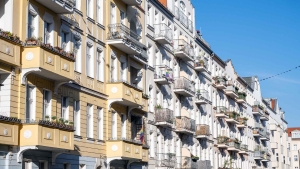Christmas Trees in Germany: A Comprehensive Guide For Newcomers
- Christmas Trees in Germany: A Comprehensive Guide For Newcomers
- Natural vs. Artificial Christmas Trees: Which Is Better?
- Where to Buy Christmas Trees in Germany
- Cost of Christmas Trees in Germany
- Where to Buy Christmas Decorations in Germany
- Decorating Tips for Your Christmas Tree
- How to Care for Your Christmas Tree
- Recycling and Disposal
- Leaving The Christmas Tree on the Street in Germany: What the Law Says
- FAQ:
- Where can I buy a Christmas tree in Germany?
- How much a Chritmas tree costs in Germany?
- What are the main differences between natural and artificial Christmas trees?
- Where can I buy Christmas decorations in Germany?
- How can I dispose of a Christmas tree after Christmas?
- What are some traditional German Christmas tree decorations?
- Can I order a natural Christmas tree online in Germany?
- What types of Christmas trees are most common in Germany?
- How do I care for a natural Christmas tree to keep it fresh longer?
- Can I use natural materials to decorate my tree?
Germany is renowned for its enchanting Christmas traditions, and the Christmas tree (“Weihnachtsbaum”) stands at the heart of these celebrations. From selecting the perfect tree to adorning it with festive decorations, this guide explores everything you need to know about buying, decorating, and maintaining a Christmas tree in Germany.
Whether you prefer the natural beauty and fresh scent of a real tree or the convenience and longevity of an artificial one, this guide covers everything you need to know to make your holidays unforgettable and filled with cheer.
Natural vs. Artificial Christmas Trees: Which Is Better?
The debate between natural and artificial Christmas trees is a classic one. Here are the key factors to consider:
Natural Christmas Trees
- Authenticity: Natural trees, such as the Nordmann fir (“Nordmanntanne”) and spruce (“Fichte”), exude a fresh pine scent that epitomizes Christmas.
- Eco-Friendliness: Sustainably farmed trees have a lower environmental impact when properly recycled.
- Costs: Prices typically range from €20 to €50 per meter, depending on the tree type and region.
Artificial Christmas Trees
- Durability: Artificial trees last for years, saving money in the long term.
- Convenience: These trees are easy to assemble, reusable, and don’t shed needles.
- Costs: Prices start around €50, with premium models costing upwards of €150.
- Environmental Impact: While reusable, artificial trees are made from non-biodegradable materials like PVC, and their production has a significant carbon footprint.
Where to Buy Christmas Trees in Germany
Local Markets and Farms
Natural Christmas trees are widely available at local markets (“Weihnachtsmärkte”) and tree farms (“Tannenbaum Plantagen”). These are the best places to find freshly cut, high-quality trees. Popular options include:
- Christmas Tree Farms: Visit local farms to choose and cut your tree. Farms often offer a festive atmosphere with mulled wine and snacks.
- Weekly Markets (“Wochenmärkte”): Many weekly markets in cities like Berlin, Munich, and Hamburg sell natural trees during December.
Garden Centers and Home Improvement Stores
Retail chains such as OBI, Bauhaus, and Hornbach stock both natural and artificial trees. They often provide a wide selection of sizes and tree stands.
Online Shops
- Amazon Germany: Offers artificial trees, lights, and decorations with fast delivery.
- Tanne24: Specializes in fresh-cut Christmas trees delivered to your doorstep.
- BaumfürDich.de: Provides an eco-friendly option for buying natural trees online.
- Wayfair.de: Features a variety of artificial trees and decorative accessories.
Supermarkets
Major supermarket chains like Aldi, Lidl, and Edeka sell natural Christmas trees during the holiday season at competitive prices.
Cost of Christmas Trees in Germany
The cost of a Christmas tree depends on its type, size, and where you buy it. Here’s a breakdown:
Natural Trees
- Small Trees (1–1.5 meters): €20–€40
- Medium Trees (1.5–2 meters): €40–€70
- Large Trees (Over 2 meters): €70+
Artificial Trees
- Basic Models: €50–€80
- Premium Models (Realistic Design): €150–€300
- Pre-Lit Trees: €100–€400
Tree Stands
- Simple stands start at around €10.
- Rotating or automatic watering stands can cost up to €50–€100.
Where to Buy Christmas Decorations in Germany
Once you’ve chosen your tree, it’s time to adorn it with festive decorations. Here are the top places to shop for Christmas ornaments, lights, and accessories:
Traditional Markets
- Weihnachtsmärkte (Christmas Markets): German Christmas markets are a treasure trove of handmade ornaments, wooden figurines, and glass baubles. Iconic markets include:
- Nuremberg Christkindlesmarkt
- Cologne Christmas Market
- Dresden Striezelmarkt
Department Stores and Retail Chains
- Galeria Karstadt Kaufhof: Offers a broad selection of traditional and modern decorations.
- TK Maxx: Features affordable ornaments and festive home decor.
- Butlers: Specializes in stylish and trendy holiday decorations.
Online Shops
- Amazon.de: Provides an extensive range of Christmas decor, from LED lights to unique tree toppers.
- Etsy: Ideal for handmade and personalized ornaments.
- Depot Online: Features chic and contemporary Christmas decorations.
Decorating Tips for Your Christmas Tree
Traditional German Decorations
- Straw Stars (“Strohsterne”): Handmade straw ornaments are a staple in German households.
- Wooden Figurines: Nutcrackers and angels are iconic decorations.
- Candles: LED candles are a safe modern alternative to traditional wax candles.
- Glass Ornaments (“Glaskugeln”): Delicate, hand-painted baubles add a touch of elegance.
Modern Trends
- Thematic Colors: Choose a color palette such as gold and white or red and silver.
- Minimalist Decor: Opt for simple, elegant ornaments and warm white lights.
- Eco-Friendly Options: Decorate with dried fruits, cinnamon sticks, and reusable ornaments.
Lighting Tips
- Use LED string lights for energy efficiency.
- Distribute lights evenly, starting from the base and working upward.
- Combine warm and cool tones for a dynamic effect.
How to Care for Your Christmas Tree
Natural Trees
- Choose a Fresh Tree: Look for vibrant green needles that don’t fall off when touched.
- Cut the Base: Trim 1–2 cm off the trunk before placing it in water to improve absorption.
- Water Regularly: Keep the stand filled with water to prevent the tree from drying out.
- Avoid Heat Sources: Position the tree away from heaters or fireplaces.
Artificial Trees
- Storage: Store in a cool, dry place to maintain its shape and longevity.
- Dusting: Clean your tree with a damp cloth before and after the holiday season.
- Assembly Tips: Follow instructions carefully to avoid damaging branches.
Recycling and Disposal
In Germany, it’s customary to recycle natural Christmas trees after the holiday season. Here’s how:
- Collection Services: Local municipalities provide tree collection services in January. Check your city’s website for schedules.
- Recycling Centers: Drop off your tree at designated recycling centers.
- Composting: If you have a garden, consider composting your tree.
After Christmas, it’s important to dispose of your natural Christmas tree responsibly. Start by removing all decorations, tinsel, and lights to ensure the tree is ready for recycling. Many cities in Germany, including Berlin and Munich, organize designated pickup days for Christmas trees in January. These trees are typically turned into mulch or compost, contributing to an eco-friendly disposal process.
If your local municipality doesn’t offer a collection service, you can transport the tree to a nearby recycling or composting center. Additionally, some gardening enthusiasts repurpose old trees as mulch for their plants or use the branches for winter protection in flower beds.
For creative alternatives, consider cutting the tree into smaller pieces and using it as firewood or crafting materials for DIY projects. However, it’s crucial to follow local guidelines and avoid disposing of trees in household waste bins. Proper disposal not only helps the environment but also ensures your holiday celebrations conclude on a responsible note.
Leaving The Christmas Tree on the Street in Germany: What the Law Says
Can You Leave Your Christmas Tree on the Street?
In Germany, you can leave your Christmas tree on the street during the designated municipal collection dates, typically scheduled in early to mid-January. These dates vary by city, so check your local municipality’s website for exact details to ensure compliance.
Important Note on Tree Decorations
Before disposing of your tree, it is mandatory to remove all decorations, including tinsel, lights, and especially metallic elements such as hooks or wires. This is crucial as many trees are repurposed for animals in zoos, where leftover decorations can pose serious risks to their health.
Legal and Eco-Friendly Chrismats Tree Disposal
Failing to adhere to collection dates or decoration removal rules may result in fines for illegal waste disposal. For an eco-friendly alternative, you can drop your tree at a recycling center or compost it in your garden. Proper disposal not only complies with regulations but also supports environmental and animal welfare efforts.
Artificial trees can be stored and reused for years, reducing waste. Donate old artificial trees in good condition to charity shops or community centers.
From finding the perfect tree to decorating it with flair, Germany offers a plethora of options for creating a magical Christmas experience, rich in tradition, charm, and festive joy.
Happy holidays!
FAQ:
Where can I buy a Christmas tree in Germany?
Christmas trees are available at local markets, farms, garden centers, and supermarkets. Popular retailers like OBI and Bauhaus offer a range of options, while online shops such as Tanne24 and BaumfürDich.de provide convenient delivery services.
How much a Chritmas tree costs in Germany?
Natural trees cost between €20 and €70, depending on size. Artificial trees range from €50 to €300, with premium or pre-lit models costing more. Tree stands start at €10.
What are the main differences between natural and artificial Christmas trees?
Natural trees offer authenticity and a fresh scent, while artificial ones are reusable and low-maintenance. Natural trees are eco-friendly when recycled, while artificial trees have a higher environmental impact during production.
Where can I buy Christmas decorations in Germany?
Traditional markets, department stores like Galeria Karstadt Kaufhof, and online platforms like Amazon.de and Etsy are excellent sources for ornaments and lights. Christmas markets also offer handmade and unique decorations.
How can I dispose of a Christmas tree after Christmas?
Remove all decorations and check for municipal collection dates in January. Alternatively, drop off the tree at recycling centers or compost it in your garden. Some people repurpose branches for gardening or DIY projects.
What are some traditional German Christmas tree decorations?
Traditional decorations include straw stars, wooden figurines like nutcrackers, glass ornaments, and LED candles. These items are widely available at Christmas markets and specialty shops.
Can I order a natural Christmas tree online in Germany?
Yes, several services like Tanne24 and BaumfürDich.de deliver fresh-cut natural Christmas trees directly to your home. They often include delivery within a few days and ensure eco-friendly options.
What types of Christmas trees are most common in Germany?
The Nordmann fir (Nordmanntanne) is the most popular for its full branches and long-lasting needles. Spruce (Fichte) is also common, offering a traditional look but with shorter needle retention.
How do I care for a natural Christmas tree to keep it fresh longer?
Trim the trunk base before placing it in water and refill the stand daily. Keep the tree away from heat sources like radiators or fireplaces to prevent drying out.
Can I use natural materials to decorate my tree?
Yes, eco-friendly options like dried orange slices, cinnamon sticks, and reusable ornaments are popular in Germany. These add a rustic and sustainable charm to your tree.
How informative was this article?
Click on a star to rate it!
We are sorry that this post was not useful for you!
Let us improve this post!
What is missing in the article?















